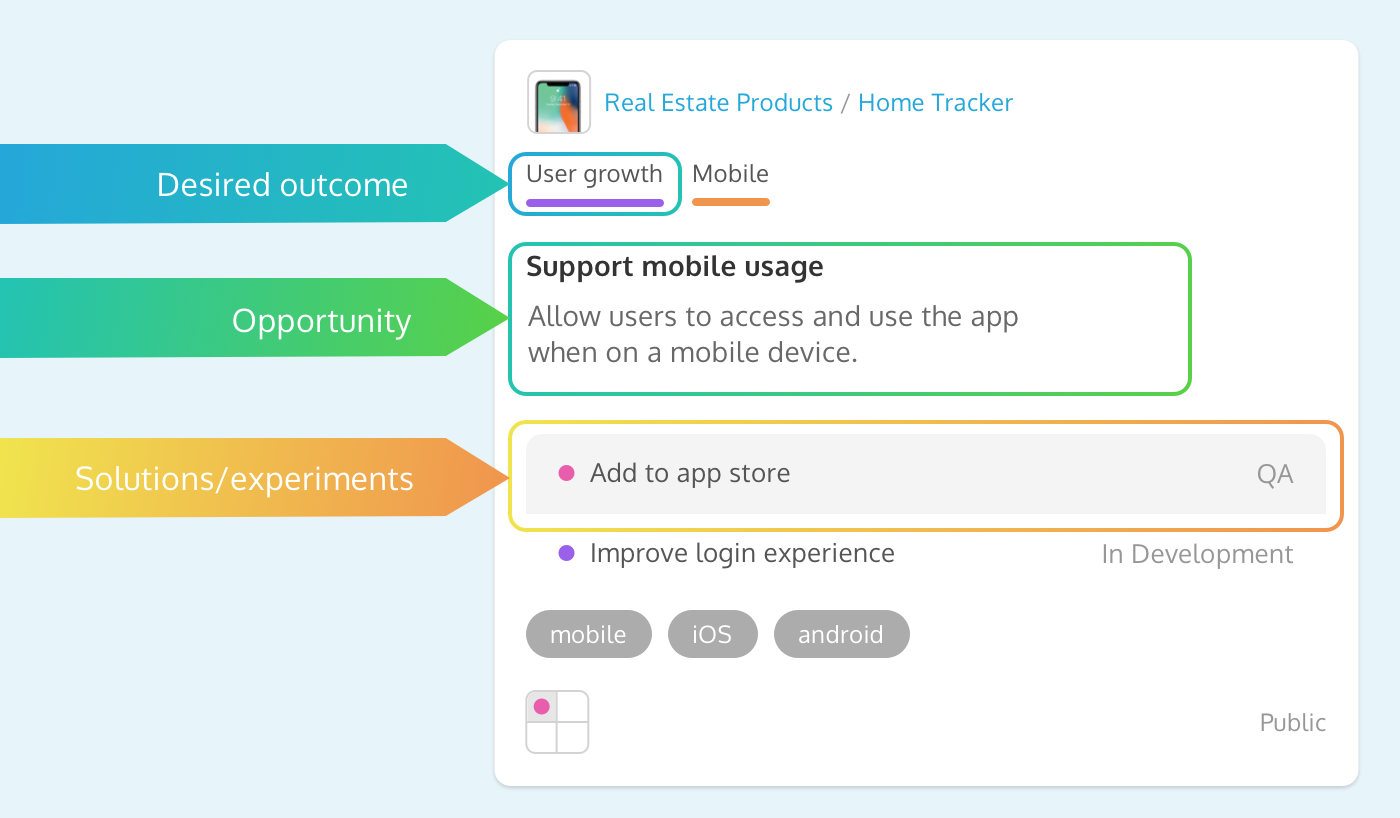Experimenting with the Opportunity Solution Tree
It’s your job as a product manager to prioritize ideas. But how do you actually decide which ones to work on? How do you sort the good ideas from the bad ideas.
What if I tell you that you don’t have to?
Allow me to introduce Teresa Torres’ Opportunity Solution Tree.
This methodology focuses on structured thinking. Forget about “good vs bad” – it’s time to focus instead on opportunities and experiments. This is about critical thinking, and comparing and contrasting what’s in front of you – with the help of your team members.
How does the Opportunity Solution Tree work?
The Opportunity Solution Tree focuses on four key elements:
- Desired Outcome (DO): What we want to achieve
- Opportunities (O): The reason for a solution; one direction that could help fulfil the desired outcome
- Solutions (S): What we will create or do; a way of implementing the opportunity
- Experiments (E): Ways a solution will be tested
When laid out visually, it looks something like this:

It is important to be clear about the desired outcome. By laying out your solutions and experiments next to each other, you can focus on what is best for the customer, rather than focusing on which idea is best.
How to apply opportunity scoring in ProdPad
You’ll be happy to know that this Opportunity Solution Tree methodology works really well with within your ProdPad account.
When applied in ProdPad, the key elements translate to the following:

An idea is a solution type you can look into. You can use your workflows to combine the different phases of the experiments at hand. This is why we always ask: “What problem are you trying to solve” on all ideas. It’s really not about the solution itself, rather than the problem you are trying to solve. The solution will come based on the experiments you run, on the feedback that you gather, and on the discussions you have as a team. Place the importance on the opportunity at hand.
Remember this is an experiment you are running. You don’t need to reprioritize everything you are working on right now. This is a method for you to look for potential opportunities. Feel free to use ProdPad’s candidate section for this. This is a space where you can draft up opportunities, and within each card, brainstorm different potential solutions. Teresa Torres enforces this in the Opportunity Solution Tree methodology.
It’s all about teamwork
The most important aspect to making this framework a success is your team. This isn’t about you as a single product manager – it’s about the thought-showering session that goes behind it. Use the knowledge from different team members to help you find those solutions and experiments. Sit down for an afternoon, take out those sharpies and post-it notes and map out your opportunity scoring tree. You can only walk away with good things.
“It’s not your job to have all of the answers. As a matter of fact, as a product manager, you’re supposed to know less than your colleagues, who are all subject matter experts in their areas. It’s your job to ask the best questions, and draw out the wide range of potential solutions to any one problem.” – Janna Bastow, ProdPad CEO / Mind The Product Co-Founder
What articles like this going straight to your inbox? Then join the party and sign up to our monthly newsletter, The Outcome. Sign up below and get the latest news, features, tips, and resources that will help you become a better product manager.

